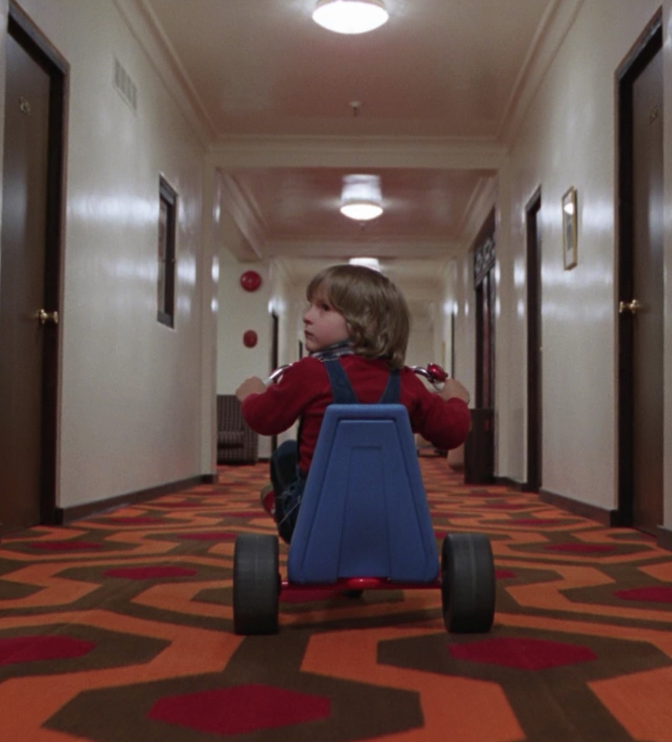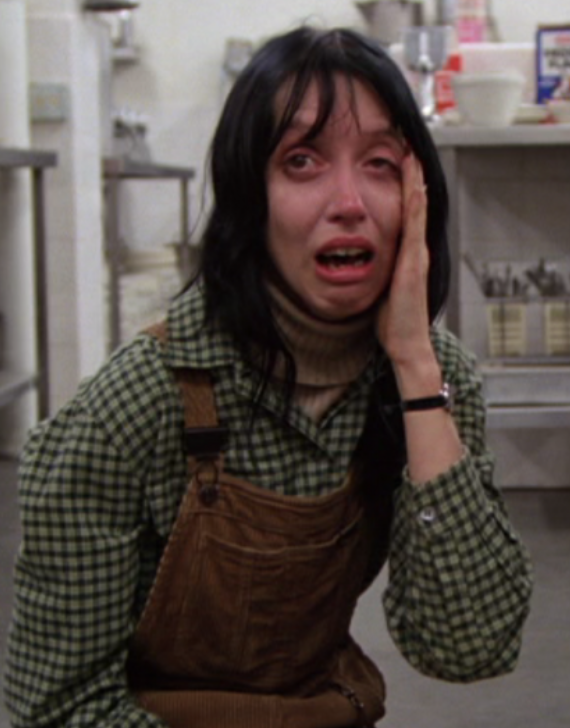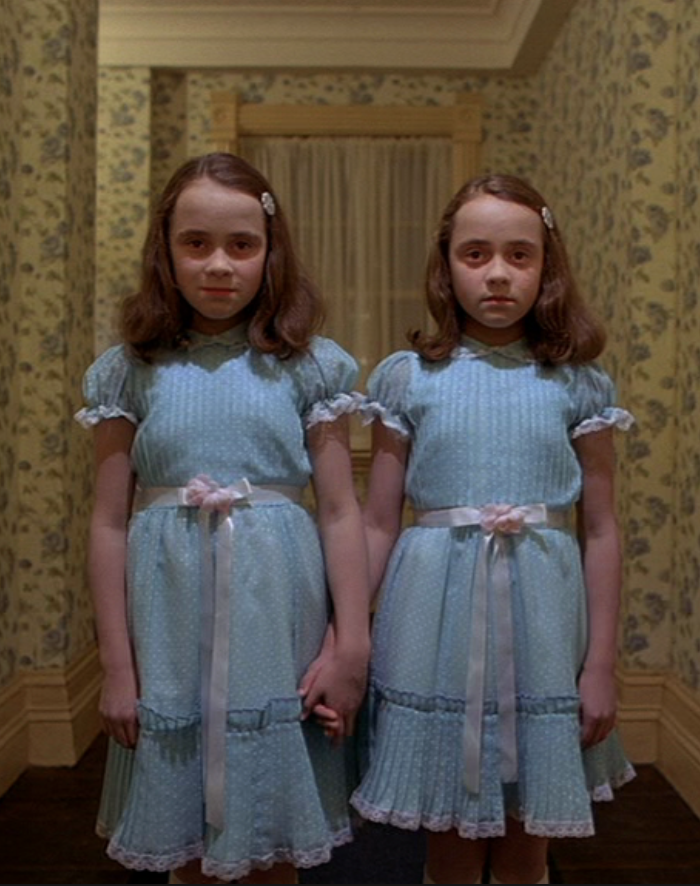 The Shining may have been released 36 years ago, but it occupies as much real estate in our cultural imagination as when it first rolled in on a wave of blood and geometric wallpaper.
The Shining may have been released 36 years ago, but it occupies as much real estate in our cultural imagination as when it first rolled in on a wave of blood and geometric wallpaper.
The documentary Room 237 explored the myriad theories and rumors surrounding the hotel horror flick to a groundswell of ballyhoo. News outlets recently reported that a paranormal expert claimed he’d seen two ghostly figures in a photo taken at the Colorado hotel where the film was shot. And a pivotal moment in this season’s finale of Girls referenced the film’s classic “Heeere’s Johnny” scene. There may be no clearer indication of cultural relevancy than a hat tip from Mz. Dunham.
Unlike many cult favorites (hello, “Lebowski”), The Shining knocked everyone’s socks off right out of the gate – even if the flaws were readily acknowledged . This adaptation was that rarest of things: an improvement, rather than a shoddy echo, of a Stephen King novel. It was also a Stanley Kubrick film that eschewed the director’s characteristically icy elegance for over-the-top violence.
The film vibrated, really, with a red, red rage. Or was that red rum?
As an ‘80s kid, I knew about The Shining for years before my parents let me see it: You only had to growl “red rum” at a slumber party and no one was going to sleep a wink. I finally saw it on a small television screen, where its grandeur got lost in the shuffle. Only when ogling the film on the enormous screen of the Hudson Valley’s Bardavon Theater in the late 1990s did I understand the scope of Kubrick’s achievement.
Apart from “The Shining,” I’ve never drunk the Kubrick Kool-Aid. My disconnect doesn’t stem from the misogyny of which he’s rightfully accused so much as his overall misanthropy – an apparent  distaste for the muss and fuss of bodies and emotions. Such a blanket rejection of humanity has always rendered his social observation too much of a piece for me– it’s too smooth, if gorgeously rendered; too unexamined. But in the genre of horror, his detachment roars into a beautiful savagery, a scale and sonic range never before conceived.
distaste for the muss and fuss of bodies and emotions. Such a blanket rejection of humanity has always rendered his social observation too much of a piece for me– it’s too smooth, if gorgeously rendered; too unexamined. But in the genre of horror, his detachment roars into a beautiful savagery, a scale and sonic range never before conceived.
It helps that he paired Jack Nicholson and forever-Olive-Oyl Shelley Duvall. Though this was the vehicle that transformed Nicholson into a star – cinema’s first rockstar, really – he still exuded enough of the nebbishy menace that made him a plausible louse in “Carnal Knowledge” (1971). That fuming impotence was ideal for Jack Torrance, the recovering alcoholic and flailing writer who moved his wife Wendy (Duvall) and extra-sensitive son Danny (Danny Lloyd) to caretake a Colorado hotel during its perilous off season. His barely masked irritation with his domestic scene – whiny wife, weirdo kid – was palpable even before the building’s evil spirits invaded his consciousness. And Duvall’s wheedling tones and pale, boneless limbs perfectly channeled Kubrick’s unexamined misogyny; I used to say only directors who secretly hated women cast her in their films.
One of Kubrick’s wiliest moves may have been to connect the dots between Torrance’s lurking anger and unsatisfactory home life and his vulnerability to possession; it’s there in King’s novel, but not as fully spelled out. (Not shockingly, the author adores his wife.) The genius, though, lay in how visual that psychological exploration was. Style, not substance, was the director’s strong suit, which made him a perfect foil for King, whose themes of the supernatural lurking in the banal (and the banal in the supernatural) were often eclipsed by the breathless redundancy of his prose.
Swooping above these characters via Kubrick’s expert film work, we felt the the scope of the horror at hand – the soaring ceilings and staircases, the swelling crimson of the sumptuous décor,  the room after room after room containing God knows what. By the time we were eye level with Danny pedaling his tricycle down the wrong carpeted hallway, we were primed for the horror of Room 237 he’d been warned about by fellow intuitive Hallorann (Scatman Crothers, falling prey to the “black character gets offed” curse that doesn’t fell Halloran in the book. Oh, Stanley.)
the room after room after room containing God knows what. By the time we were eye level with Danny pedaling his tricycle down the wrong carpeted hallway, we were primed for the horror of Room 237 he’d been warned about by fellow intuitive Hallorann (Scatman Crothers, falling prey to the “black character gets offed” curse that doesn’t fell Halloran in the book. Oh, Stanley.)
Rest assured nobody has ever viewed a twin the same way again.
At heart, this is not a film about metaphysical horror so much as it is about the horror that is our buried resentment. The Shining explores space and intimacy –the ties that bind and blind us, the conventional structures that dwarf and drown us. This was the perfect match of men and material, and its well-appointed fury only grows more relevant as we skulk alone together in the cozy aggression of online isolation.
This was originally published on Signature.
